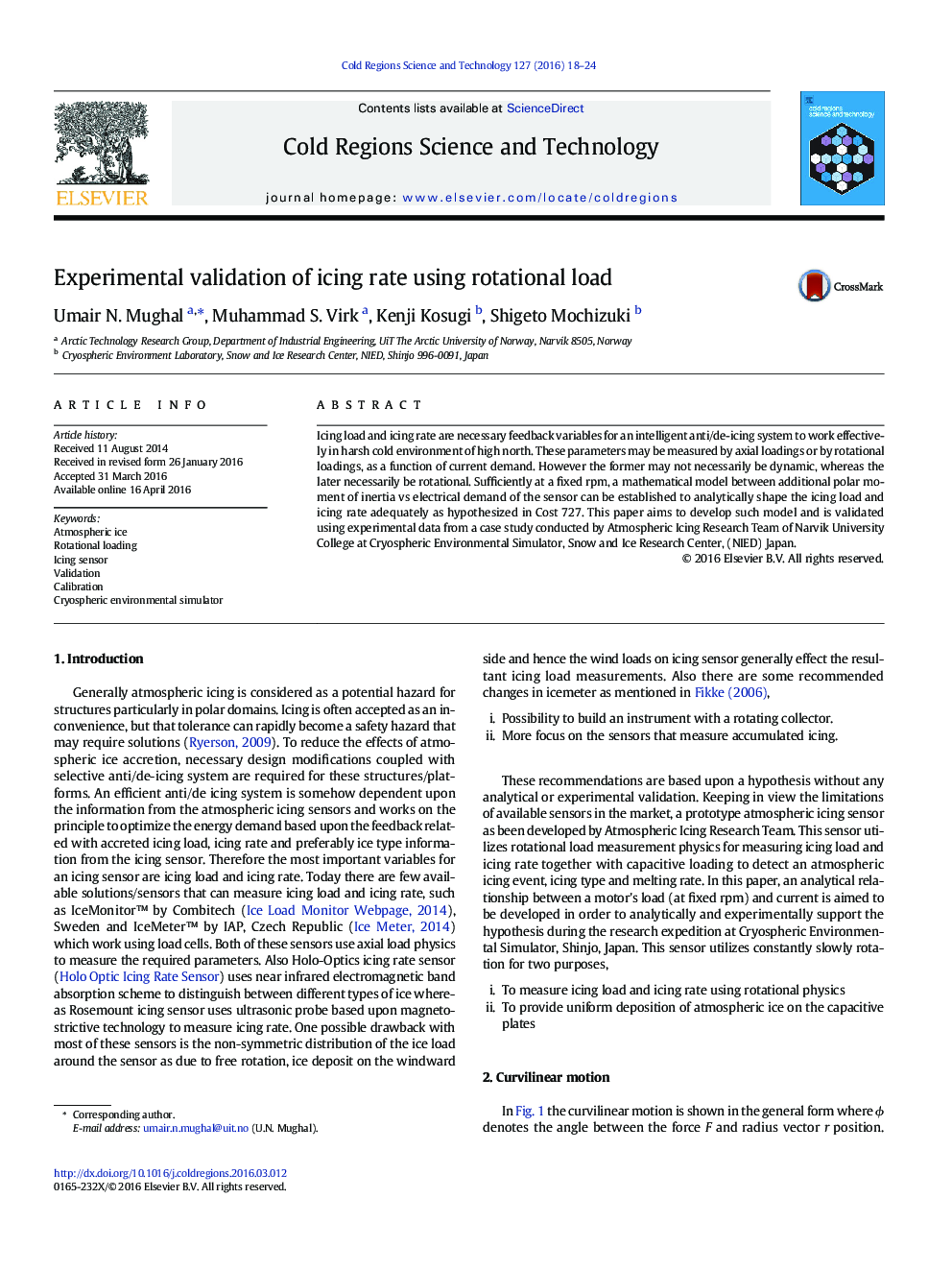| Article ID | Journal | Published Year | Pages | File Type |
|---|---|---|---|---|
| 4675644 | Cold Regions Science and Technology | 2016 | 7 Pages |
•Analytical model to calculate the icing load by measuring the current demand•Relationship between change in ice mass and required current to maintain rpm•Symmetric distribution of ice on rotating structure•Experimentally analysis of ice loads using forced rotation at constant rpm
Icing load and icing rate are necessary feedback variables for an intelligent anti/de-icing system to work effectively in harsh cold environment of high north. These parameters may be measured by axial loadings or by rotational loadings, as a function of current demand. However the former may not necessarily be dynamic, whereas the later necessarily be rotational. Sufficiently at a fixed rpm, a mathematical model between additional polar moment of inertia vs electrical demand of the sensor can be established to analytically shape the icing load and icing rate adequately as hypothesized in Cost 727. This paper aims to develop such model and is validated using experimental data from a case study conducted by Atmospheric Icing Research Team of Narvik University College at Cryospheric Environmental Simulator, Snow and Ice Research Center, (NIED) Japan.
